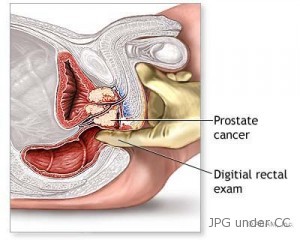Prostate Cancer facts

Overview
Prostate cancer is the abnormal growth and development of immature cells in the prostate of the male. This is a small gland in males that is in charge of the production of seminal fluid that nourishes, protects, and transports the sperm.
This disease is also known as one of the most common type of cancers in men and should be diagnosed immediately once the symptoms begin to show. This type of cancer is not only life threatening, but the treatments being done to cure it can cause side effects that can affect the overall sexual performance of the male such as erectile dysfunction.
The nature of Prostate cancer is that it usually grows and remains in the prostate gland of the male, which means the cancer cells remain within and don’t spread throughout the body. But of course there are different types of such a cancer; there are some that grow slowly and don’t need serious treatment while there are certain types of prostate cancer that grow rapidly and even spread throughout the body. It is usually best if you can identify if you have the cancer early since treatment will have more chances of succeeding.
TYPES AND FORMS
Just like testicular cancer, this type of cancer disease is identified when there is a lump or mass present in the prostate gland. This is known as a tumor, and from this accumulated mass of cancer cells, doctors can identify the type of this disease.
There are many types of prostate cancer, including:
- Adenocarcinoma prostate cancer – this type of cancer is usually found in the main gland of the prostate and is known to be one of the most common types identified.
- Small cell carcinoma – this type of prostate cancer is made up of small round cells which normally form around the nerve cells. This type is very aggressive, which means it can quickly grow and spread throughout the body when undetected and untreated. Since it is also difficult to identify, usually it has already reached an advanced stage when detected and diagnosed by doctors.
- Squamous cell carcinoma – this is known to be a non-glandular type of prostate cancer and doesn’t increase in prostate antigens, so it is difficult to detect. It is also aggressive in nature just like the small cell carcinoma.
- There are other rare types of this disease, some of which are:
1. Prostatitis-induced prostate cancer.
2. Sexually transmitted diseases that have contributed to the development of prostate cancer.
3. Obesity related prostate cancer.
SYMPTOMS
Normally it is difficult to really identify if a man has prostate cancer since it doesn’t produce noticeable symptoms during the early stages of development. This means that the only time when the cancer is identified if when it has already advanced and spread throughout other parts of the body besides the prostate gland. Once the symptoms have been detected, they can tell how advanced the cancer is and how far it has spread already.
Early Signs of Prostate Cancer:
- Urinary or bladder control problems
- The person has trouble urinating due to pressure caused by the tumor
- Starting and stops during urination
- Weak force in the urine stream
- Blood in the urine
Once the cancer begins to spread to the lymph nodes in the pelvic area, it can cause swelling in the legs and inevitable discomfort. As the cancer advances and begins to spread to the bones, there will be bone pain, fractures, and even compression of the spine.
CAUSES
The main causes of prostate cancer are still unknown, but some researchers theorize that some of the risk factors like heredity, family history, hormones, and the environment could have played a role in contributing to the development of prostate cancer. For instance, prostate cancer is usually rampant among men who have reached the age of 50, who are African-American, and those who have extremely high testosterone levels.
TREATMENT
Fortunately for patients, there are many options on how to treat prostate cancer. It’s usually a combination of treatments such surgery then radiation therapy. But of course the treatments would have to depend on several factors such as the how severe the cancer is, how far it has spread, the age of the person, etc. This section will focus on the common and most effective treatments for prostate cancer.
External Beam Radiation Therapy (EBRT)
This treatment uses high powered X-rays in order to kill the cancer cells. Though this is very effective in destroying the cancer, it can also destroy or scar healthy tissues and other side effects such as urinary problems, loose bowel movement, bleeding, and even sexual side effects.
